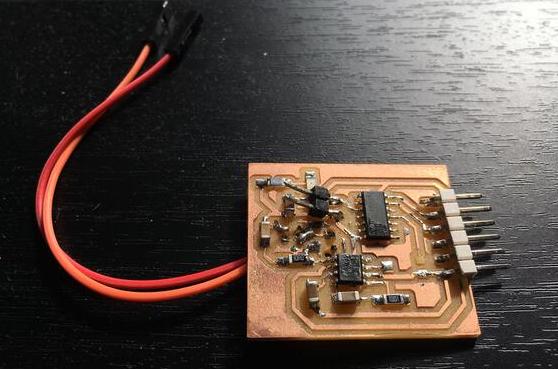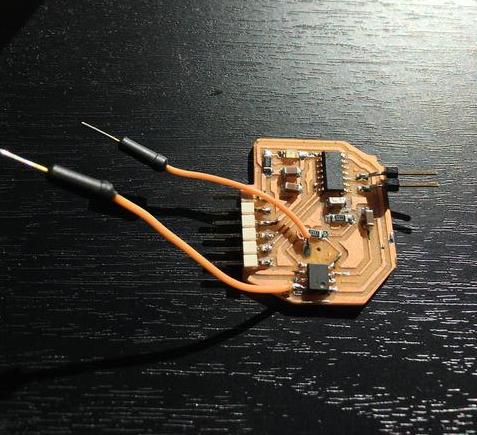12. Output devices¶
individual assignment: add an output device to a microcontroller board you’ve designed, and program it to do something.
¶
group assignment: measure the power consumption of an output device.
Research¶
The weeks of input, output devices are critical for my Final project. As I make an interactive sound module, there is some science behind the operational characteristics of a speaker as well as possible input sources such as microphones or even the choice of switches and buttons.
Below, An example circuit of a greeting card based memory capsule driven short audio file played back on a 8 ohm speaker
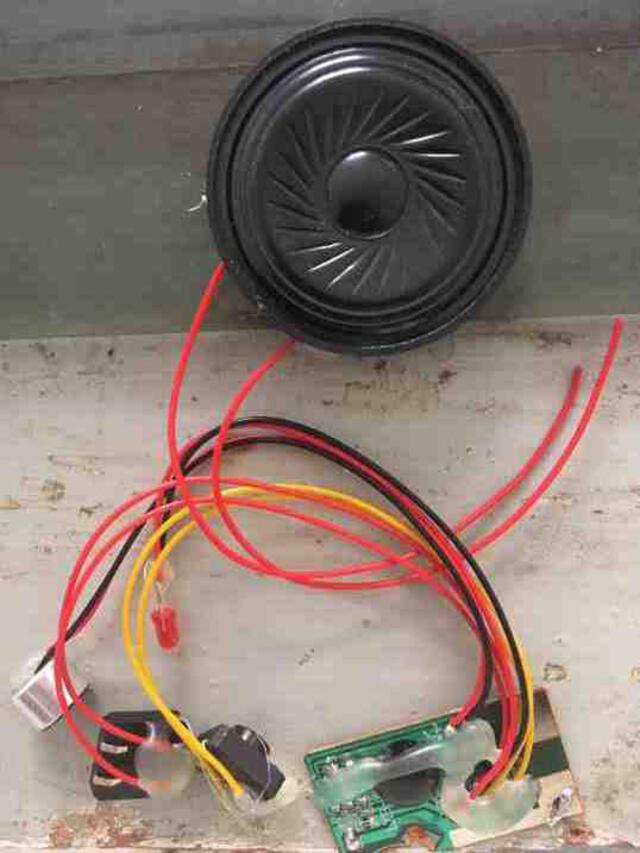
While choosing an output device, I had previously had only experience with LEDs and Arduino.
The output device I would like to use should ideally have Sound +/ Light as a possible out device feedback - however, for this week assignment I chose to focus on speaker and the corresponding board design for getting a basic input through to the Output.
Since for the final project I am designing an interactive sound module, once I get a Speaker to work, then I would improve the board design to also extend it to LED using one of the Fourier Transform functions with audio bandwidths as an additional output test.
Such a light pattern display could also test whether the signals for interactivity such as pause, record, playback, loop can be triggered - with appropriate triggers like button / switch as case maybe.
2020 work with microcontroller driven speaker¶
Last year this week was in the middle of a lockdown with the CoVid crisis - it was initially attempted to design a PCB for the entire input, output and networking on a single board. However this proved to be a bit ambitious at this stage, mainly because of the “chewing gum stuck in hair” effect during the PCB Ki-Cad design for a single sided board.
I proceeded to stick to Output Device as a first priority for final project, before reverting to the signal path for the inputs (in the form of an SD card).
From the Fablab inventory, there were two amplifier components - Initially, I chose the one with the MONO output ie. the LM4871M-ND.
The LM4871 seems to be quite flexible - its applications range from laptops to low voltage systems. However, it seems its a new amplifier as it was not default in the schematic symbols within KiCad - I had to loop up videos on how connections are done with similar op-amps, such as the LM386 - so that I could create a mental analogue with the LM4871.
Also the 4871 comes with a new voltage symbol VDD. WHY VDD is a bit different than VCC
I proceeded to switch to the LM386 after all though, while developing the schematics
Schematics and PCB milling¶
Schematic with AtTiny 1614 as a programmable DAC sending audio signal through the LM 4871 amplifier - there is a provision for a speaker output
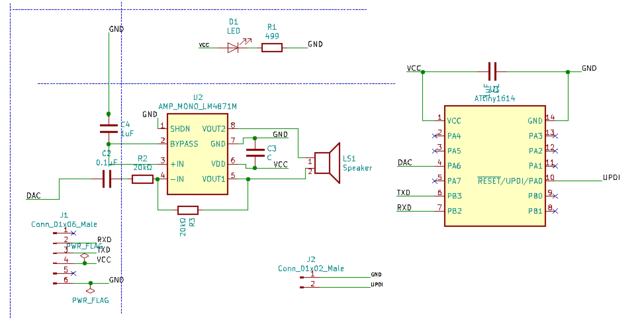
The corresponding board with the speaker lines drawn from the back of the single sided PCB board
Improved Schematic with AtTiny 1614 as a programmable DAC sending audio signal through the LM 4871 amplifier - there is a provision for a speaker output from the front of the board that has been given also a shape
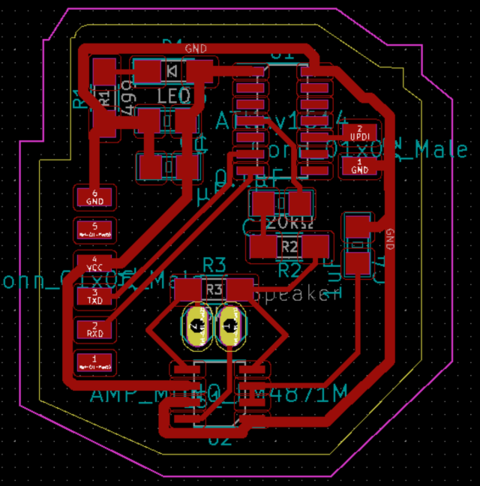
The corresponding board is seen below
Trimmer versions¶
Third PCB design with AtTiny 1614 as a programmable DAC sending audio signal through the LM 386 amplifier
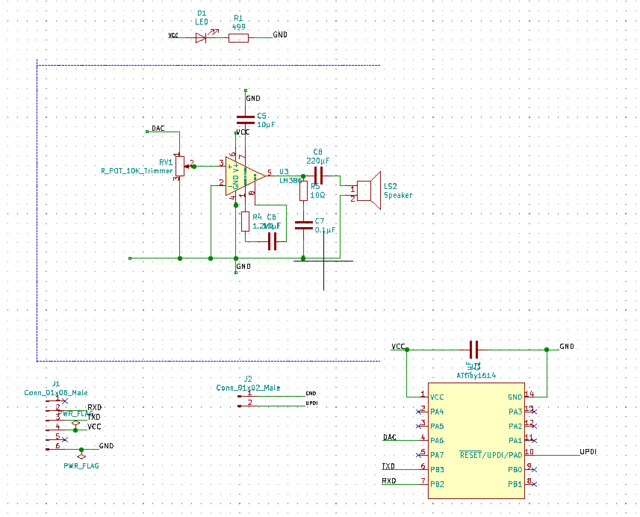
There is a provision for a speaker output and the capacitor terminals are left OPEN as we had only THT components that could also be adjusted externally if needed.
There was also added a 10K potentiometer/ Trimmer in order to be able to control the gain of the amplifier.

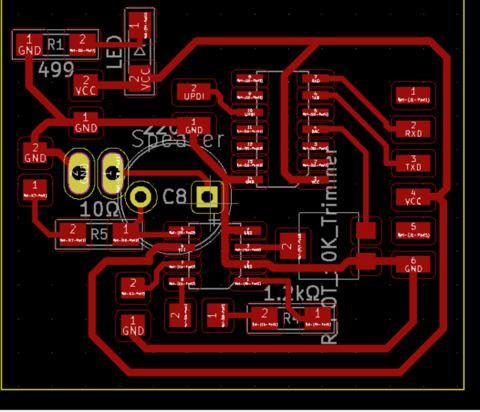
The corresponding board with trimmer and external 220 microfarad capacitor is seen below.
Video Capture: experiments with LM386 amp and ATtiny 1614¶
lm486_attiny1614 from Ranjit Menon on Vimeo.
LM386¶
https://www.eleccircuit.com/lm386-datasheet-low-voltage-audio-power-amplifier/ THIS! https://www.instructables.com/id/Know-Your-IC-LM386/ /likeable intro of the LM386
https://circuitdigest.com/electronic-circuits/lm386-audio-amplifier-circuit / Simple Mic audio amplifier
